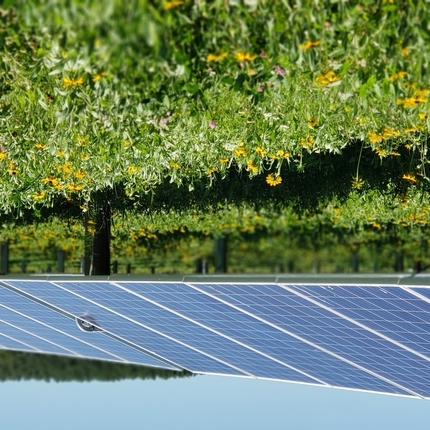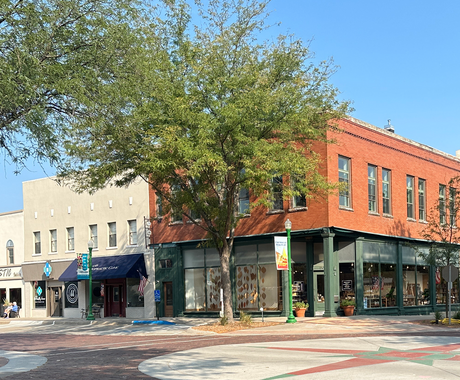By Cody Smith, former staff member | Published in the Cedar Rapids Gazette on May 2, 2020
Across Iowa, solar is in the midst of an unprecedented industry boom. Installed solar energy has grown rapidly from two megawatts in 2012 to about 115 megawatts today, according to the Energy Information Administration.
Meanwhile, there are several hundred megawatts worth of solar projects being considered by the Iowa Utilities Board. While these projects create new jobs and careers, provide customers with clean and affordable energy, and stimulate rural economies, there is another, lesser-known practice that may help this industry boom offer a brighter future for Iowa communities.
With each new solar installation, the opportunity exists for stakeholders to implement native vegetation on those sites, shining a spotlight on an innovative rural development strategy. A newly-released publication from the Center for Rural Affairs and the Iowa Environmental Council—“Solar Siting Resource Guide: A Road Map For Counties”—outlines the practices developers, counties, and cities can use to pair native vegetation with solar projects as well as guidance on crafting balanced county-wide solar ordinances.
Before construction begins on a solar project, the project developer and a willing landowner must first reach a mutual agreement that preserves the interests of both parties. Most often, these projects are sited in areas of undeveloped property, or marginal farmland. Whether it is smaller-scale community solar, or larger, utility-scale solar projects, these projects offer a significant opportunity for the restoration of critical, mutually-beneficial pollinator and wildlife habitat. Since new solar projects may require several acres of land, there are new and previously unrealistic opportunities for uninterrupted corridors of habitat.
By working with counties and landowners to invest in native vegetation, project developers can create habitat for a variety of at-risk pollinators and wildlife while meeting practical goals, like managing stormwater. Populations of native bees, honey bees, monarch butterflies, and game birds, such as pheasants and quail, each benefit from new investments in habitat. This habitat used to be provided by rolling prairie, which covered much of Iowa. But, with less than one-tenth of one percent of native prairie remaining in Iowa, the reintroduction of native prairie is a priority for many communities. This is a practical way to encourage reestablishment.
In addition to the positive outcomes for project developers and the environment, the establishment of native vegetation offers a way to empower rural landowners to leverage their agreements with project developers in creative ways.
Solar projects in some Minnesota counties host apiaries, and the resulting honey has been used as an ingredient in locally-brewed beer. This has opened up a new revenue stream for the landowner while creating a new, locally-produced ingredient for the local brewery’s owner. In other scenarios, livestock owners are compensated for grazing the native vegetation with their sheep as an environmentally-conscious management option.
Iowans are known for our entrepreneurship and determination to improve our communities. As solar energy continues to expand it will be up to us to push for this practical co-use of solar farms. Coupling solar farms and native vegetation is a pragmatic way to create meaningful investments in the natural resources of our communities while creating opportunity for our residents.
Feature photo provided by the Center for Pollinators in Energy.





